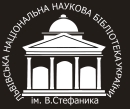DOI: https://doi.org/10.37222/2524-0331-2020-10(28)-17
Lytvyn Oksana, Holubinka Nadiya
Rhetorical figures in a publicistic style
Abstract:
The article deals with the actual practical aspects of the usage of rhetorical figures in publicistic style. The object of our research is rhetorical figures in publications of the magazine «Ukraiinskyi Tyzhden’», whilst its subject is functions of these unites in publicistic text. A particular attention has been paid to that a purpose of this style is to shape public opinion. Journalistic texts mould a special sphere for language functioning. There all language processes manifest themselves as a system, and language is employed as a means of impact, which has systematic and specific textual characteristics. The use of some rhetorical figures shows how syntactic constructions express the structure of the author’s thinking, increase the persuasiveness and power of influenceon readership. The material for the research is publications of the magazine «Ukraiinskyi Tyzhden’». This article aims to show how syntactic constructions express the structure of the author’s thinking, increase the persuasiveness and the power of influence on its readers. It has been determined that in the publicistic style the figures of accumulation, dialogue, rhythmization are actively used. They help to emphasize the information, to pay attention to the important elements of the material submitted by the author. Authors of nonfiction texts often combine several rhetorical figures into a single syntactic construction to provide the reader with a clearer picture. It has been elucidated that a rhetorical question is the strongest rhetorical figure in publicism, specifically, in the case study of the magazine «Ukraiinskyi Tyzhden’». We argue that such usage broadens limits of means of publicistic style, facilitates an effective communication of problems of contemporary society. Additionally, it enriches knowledge of readers, system of values and thoughts, as well as shapes public opinion.
Keywords: rhetorical figures, publicistic style, journalistic text, syntactic construction, media.
References:
1. Datsyshyn, Kh. P. (2005). Nova katehoriia poniattia «vybory» zasobamy suchasnoi politychnoi metaforyky (za materialamy periodychnykh vydan) [A new category of the notion «elections» by means of contemporary political metaphors (on the basis of the periodicals)], Studia iszkiceslavistyczne, Opole, t. 6, s. 210—215. (in Ukr.).
2. Kapeliushnyi, A. O. (2007). Praktychna stylistyka ukrainskoi movy [A prac tical stylistics of the Ukrainian language]: navch. posib., 2-he vyd., pererobl., Lviv, PAIS, 400 s. (in Ukr.).
3. Kochan, I. (2008). Linhvistychnyi analiz tekstu [A linguistic analysis of text]: [navch. posib., 2-he vyd., pererobl. i dopovn.], Kyiv, Znannia, 423 s. (in Ukr.).
4. Kunch, Z., Horodylovska, H., Shmilyk, I. (2016). Rytoryka [Rhetoric]:pidruchnyk, Lviv, V-vo Lvivskoi politekhniky, 496 s. (in Ukr.).
5. Kunch, Z. (1997). Rytorychnyi slovnyk [Rhetorical dictionary], Kyiv,Ridna mova, 341 s. (in Ukr.).
6. Matsko L., Matsko, O. (2006). Rytoryka [Rhetoric]: [navch. posib. 2-he vyd., stereotyp.], Kyiv, Vyshcha shkola, 311 s. (in Ukr.).
7. Ponomariv, O. D. (2000). Stylistyka suchasnoi ukrainskoi movy [Stylistics of contemporary Ukrainian language]: pidruchnyk, Ternopil, Navchalna knyha — Bohdan, 248 s. (in Ukr.).
8. Sahach, H. (2005). Khram slova. Dukhovne krasnomovstvo [The Temple of word. Spiritual eloquence], Kiev, Kontsern «Vydavnychyi Dim “In Yure”», 2005, 296 s. (in Ukr.).
9. Farion, I. D. (2009). Movna norma: znyshchennia, poshuk, vidnova [Linguistic norm: disruption, search and renewal] (Naukovo-navchalne vydannia): [monohrafiia], Ivano-Frankivsk, Misto NV, 2009, 328 s. (in Ukr.).
